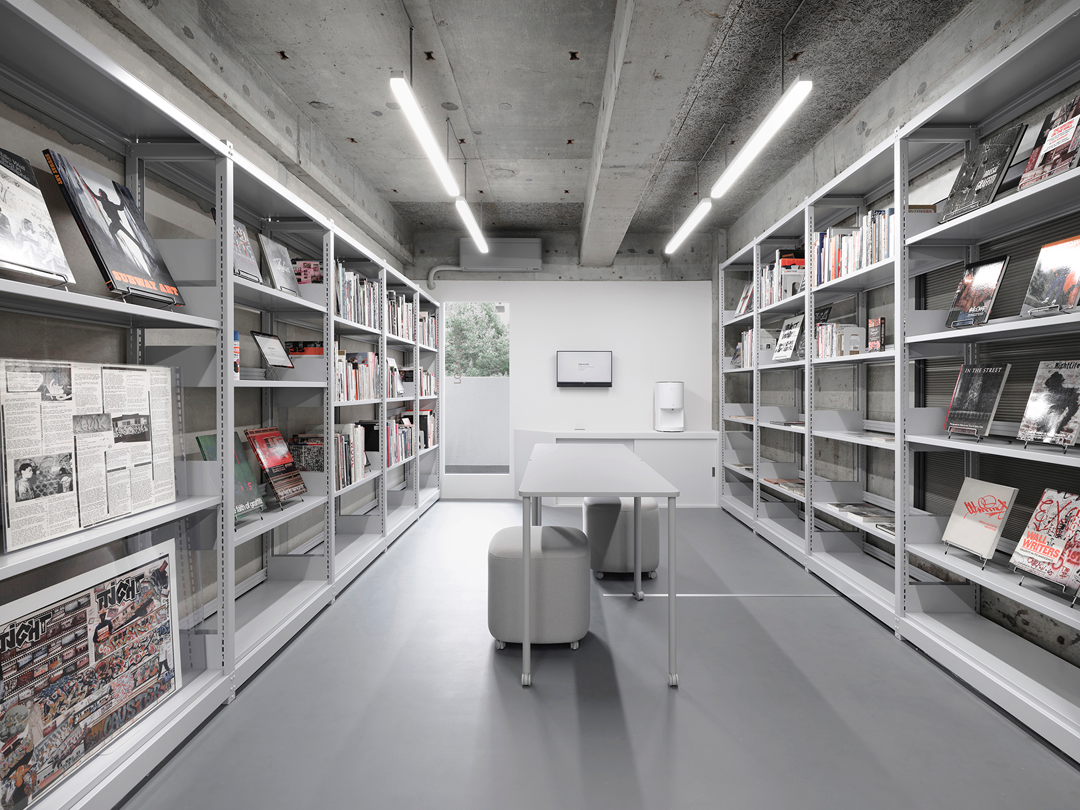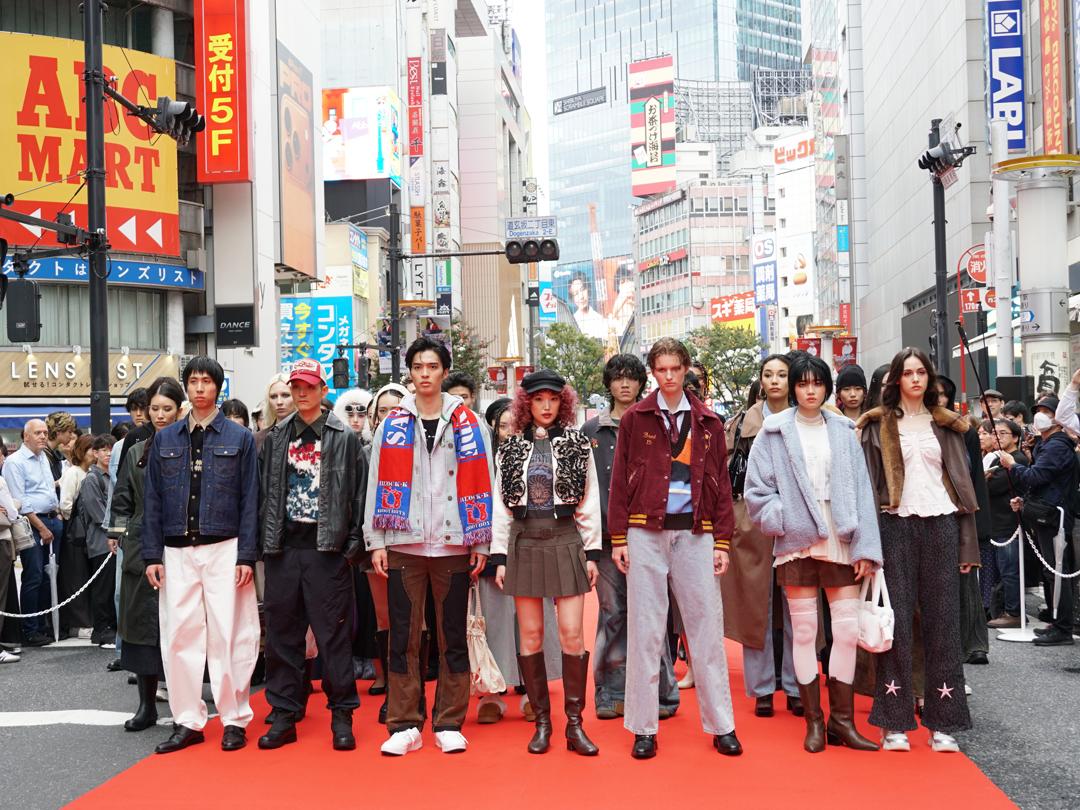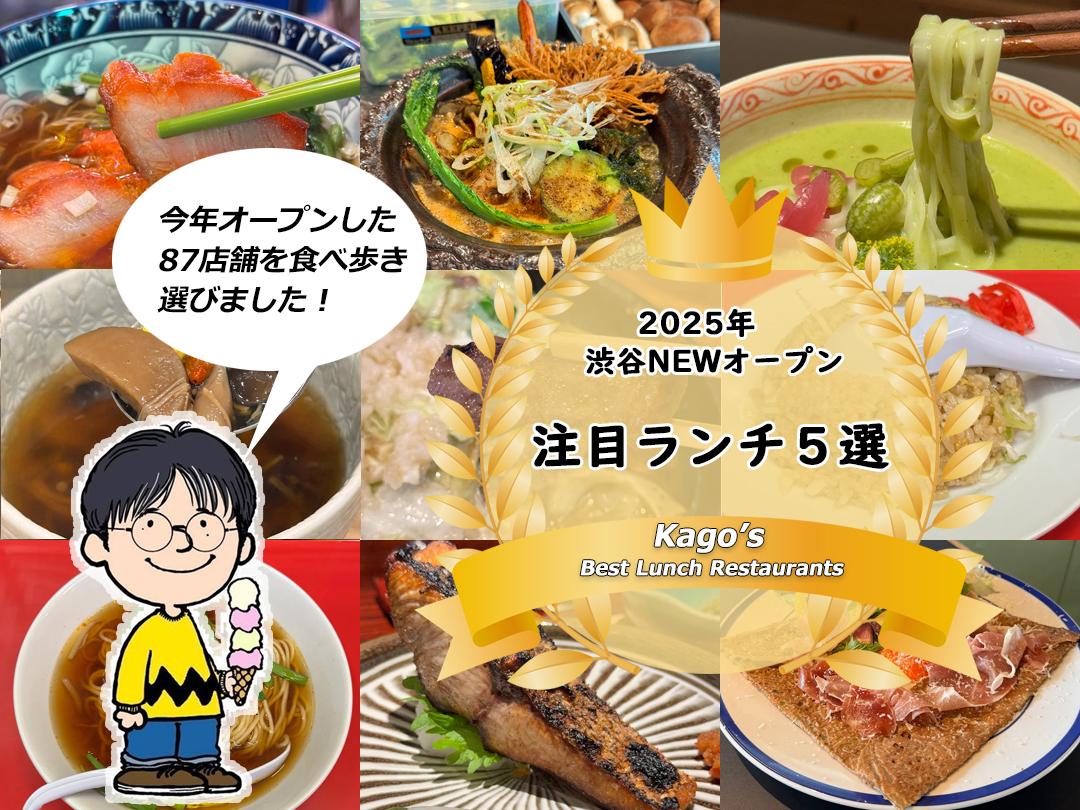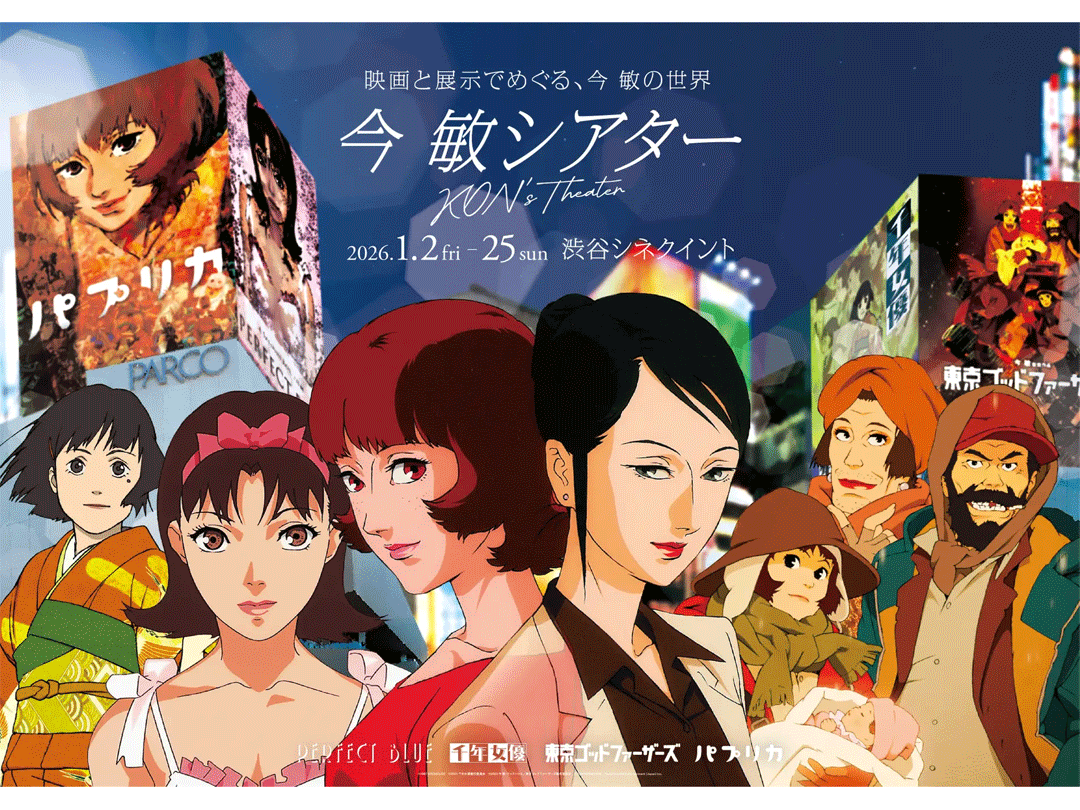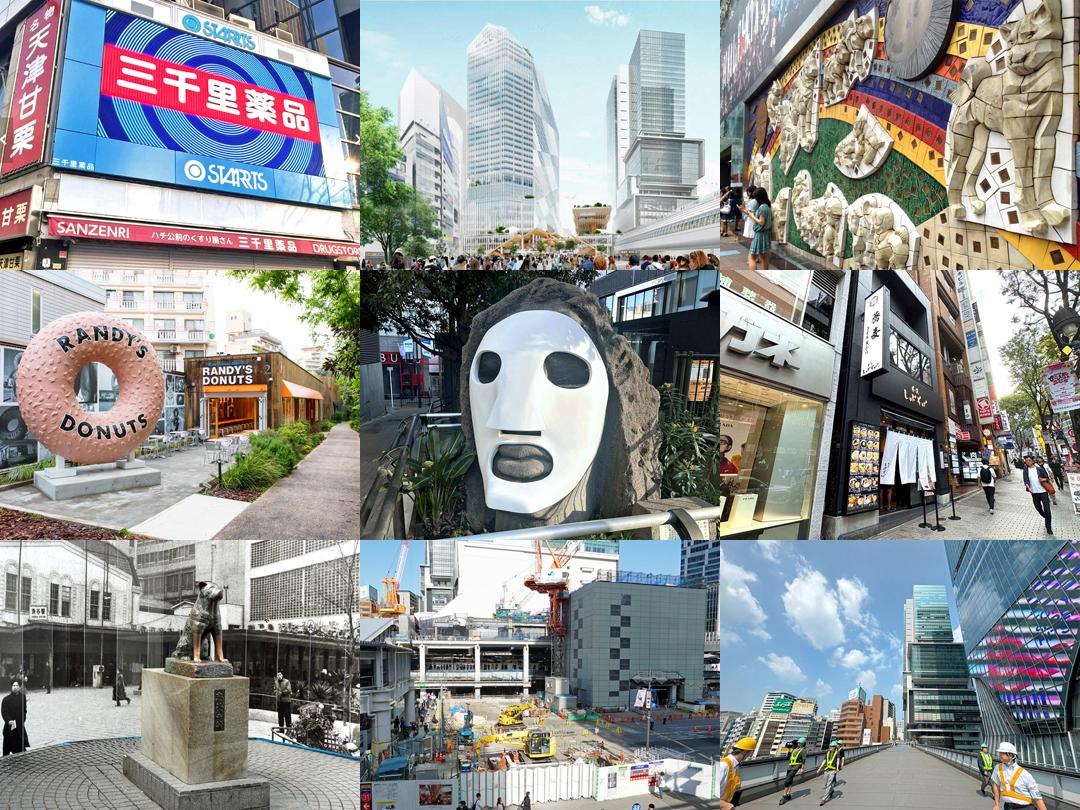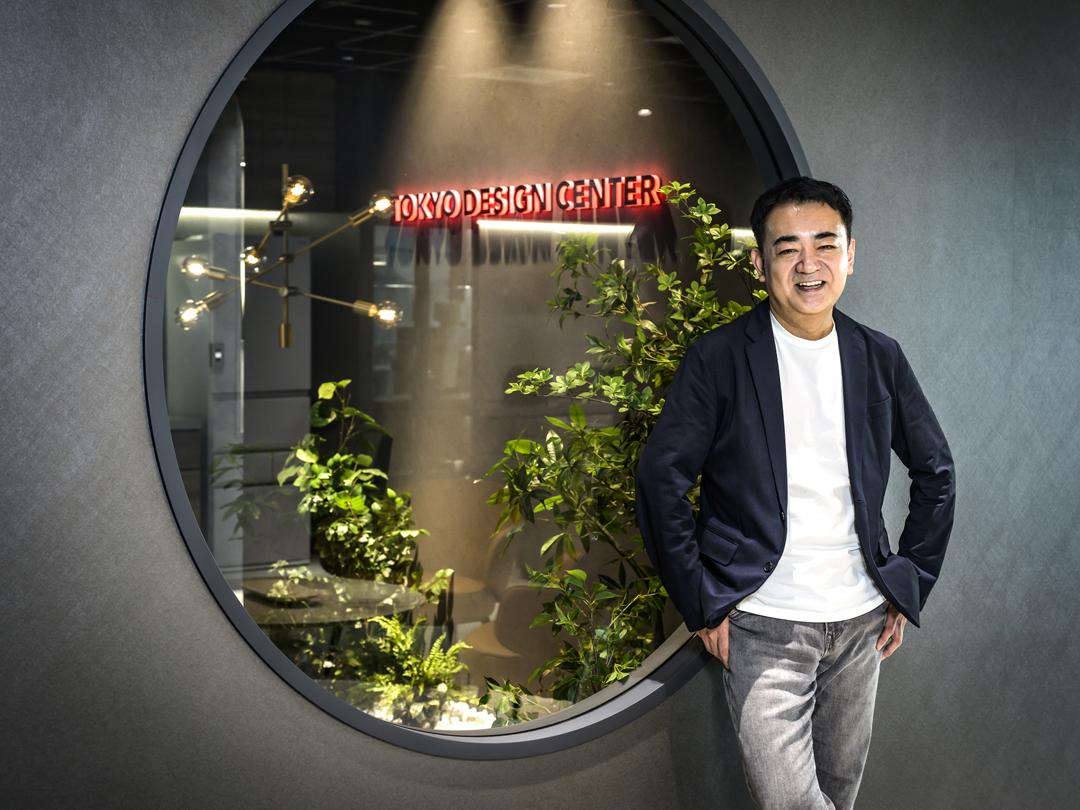SHIBUY.A. × WATCH
The hidden history of the Moai Statue, the "guardian deity of Shibuya," and why it's so beloved
2024-12-02
The symbol of Shibuya Station is the Hachiko Statue, but we must not forget the Moai Statue, which tends to be hidden in its shadow. In the past, many people would avoid the crowded Hachiko Square and use the Moai Statue at the west exit as a meeting place. If Hachiko is the "idol of Shibuya," the Moai Statue can be said to be the "guardian deity of Shibuya," and there is something exotic and mysterious about its appearance. Currently, the demolition work of the West and South Buildings of Tokyu Toyoko Department Store is progressing, and a large temporary fence has been installed at the west exit of Shibuya Station. As a result, many people are worried about where the Moai Statue has gone. In this article, we would like to introduce the history of the installation of the Shibuya Moai Statue, its cultural background, and new developments accompanying the redevelopment of Shibuya.
The reason for the installation of the Moai statue and its cultural background
So, when was the Moai Statue installed at Shibuya Station, and for what purpose? People all over the world know the story of the brave Hachiko who waits for his deceased master to return as "The Tale of Hachiko," but few people know the "Story of the Moai Statue." Let's take another look at how it came to be.
The Moai Statue in Shibuya was erected in Shibuya Ward by Niijima Village in 1980 (Showa 55) with the aim of promoting tourism and culture on Niijima Island in the Izu Islands. This was an effort to deepen friendly relations with Niijima while also promoting tourism, and at the time several cities including Shibuya and Kamata were selected as locations for the statue.

Installation of the Moai statue in front of Shibuya Station (September 25, 1980) Image provided by Shibuya Ward
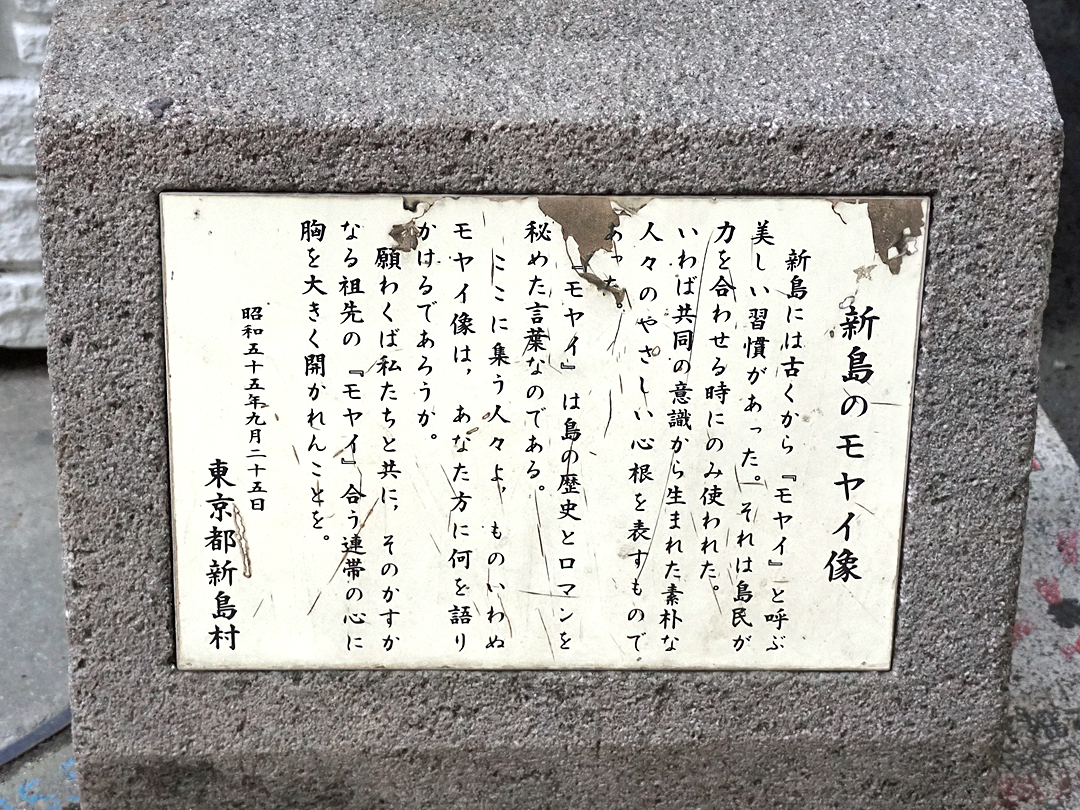
A stone monument that was put up at the time of the statue's installation. It expresses Niijima Village's feelings toward the Moai statue that was installed in Shibuya.
The Moyai statue was created in the late 1960s by Daigo Yuichi, a sculptor from Niijima, as part of an effort to revitalize the island. The statue was made of volcanic rock called "koga stone" (fire-resistant stone), a specialty of Niijima, and was carved with the motif of "Inji the Exile." "Exile" refers to people who were sent to the island as a punishment to be isolated from society. Niijima was used as a place of exile from the Edo period to the early Meiji period, and this history is the background. Some of the exiles were of high status and taught reading, writing, and learning to the islanders and interacted with them, and were respected by the islanders, who called them "Inji" ("Grandfather" in the island dialect). The Moyai statue has a shape and name reminiscent of the Moai statues of Easter Island, but it is a work that reflects Niijima's unique cultural element of "respected exile Inji."
Furthermore, the name "Moyai" instead of "Moai" means "to join forces" or "to help each other" in Niijima's dialect. It symbolizes the sense of solidarity that the islanders have built up through cooperation and living together on Niijima, surrounded by a harsh natural environment, and that spirit is embodied in the word "Moyai." Therefore, the Moyai statue is not simply an imitation of the stone statues of Easter Island, but a symbol that embodies the history and spirit of Niijima.
From a meeting spot to a place for corporate PR: Why the Moai Statue is loved
The Moai statue in Shibuya that we are accustomed to seeing has a grayish appearance, but if you look at photos of the statue when it was first installed, you can see that it is surprisingly white. The untainted Koga stone is a beautiful white natural stone.
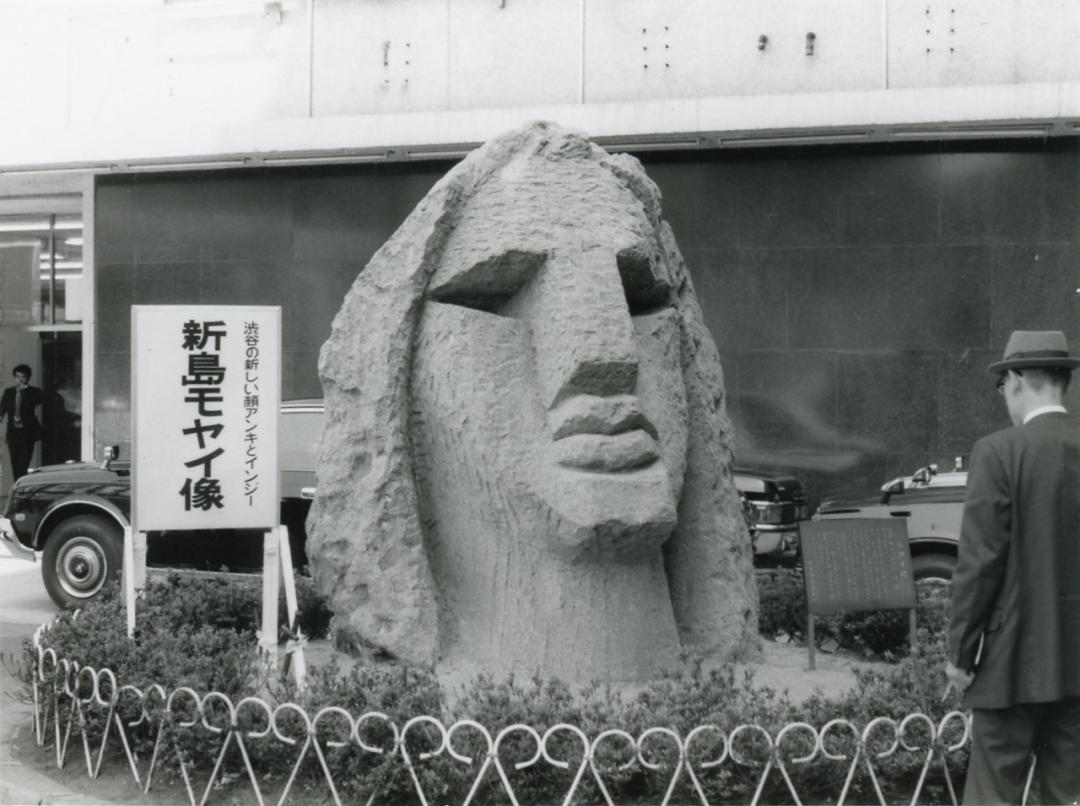
The Moai Statue when it was first installed (1975-1985) Image courtesy of Shibuya Ward
In the photo taken at the time of its release, a sign reading "Niijima Moai Statue: Shibuya's new faces, Anki and Inji" is set up. "Ankie (=Young person)" is the face facing the front of the statue, and is designed to resemble a young surfer with long hair. This is thought to represent the image of young people who enjoy surfing on Niijima.
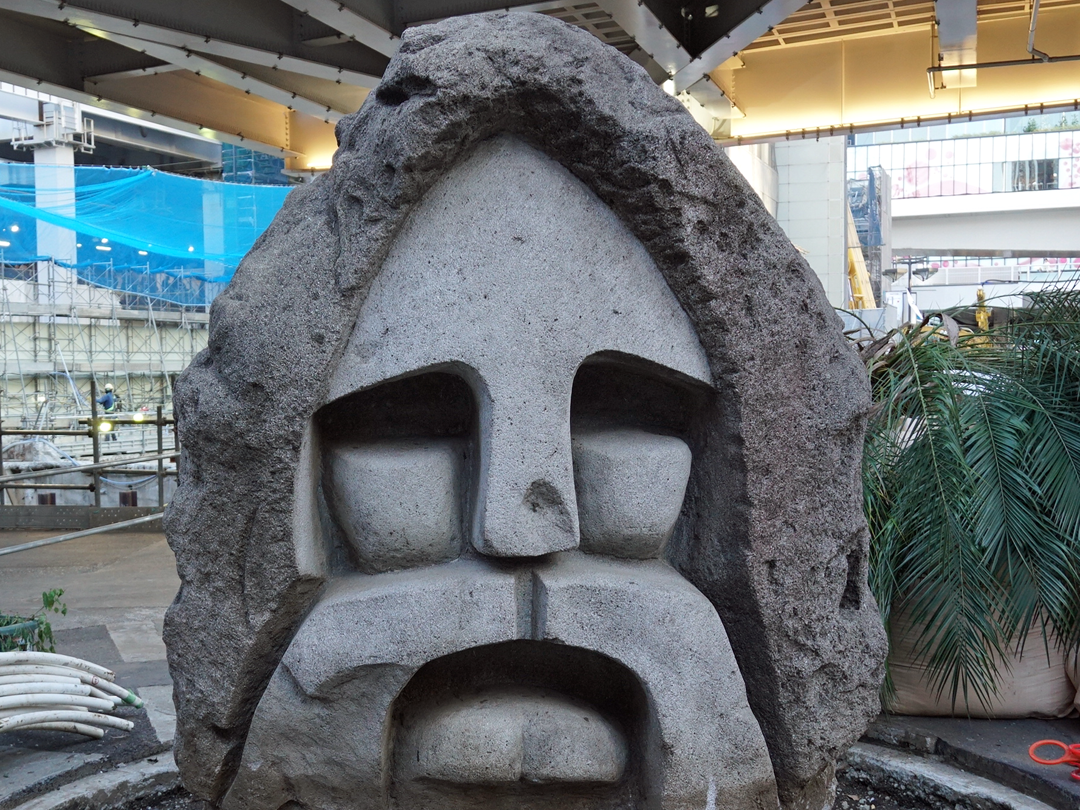
"Exile Inji" respected by the islanders
On the other hand, "Inji" is the face on the back of the statue, and represents the aforementioned "exile." Perhaps with the youth culture of Shibuya in mind, this Moai statue has a very unique design with two different faces on the front and back.
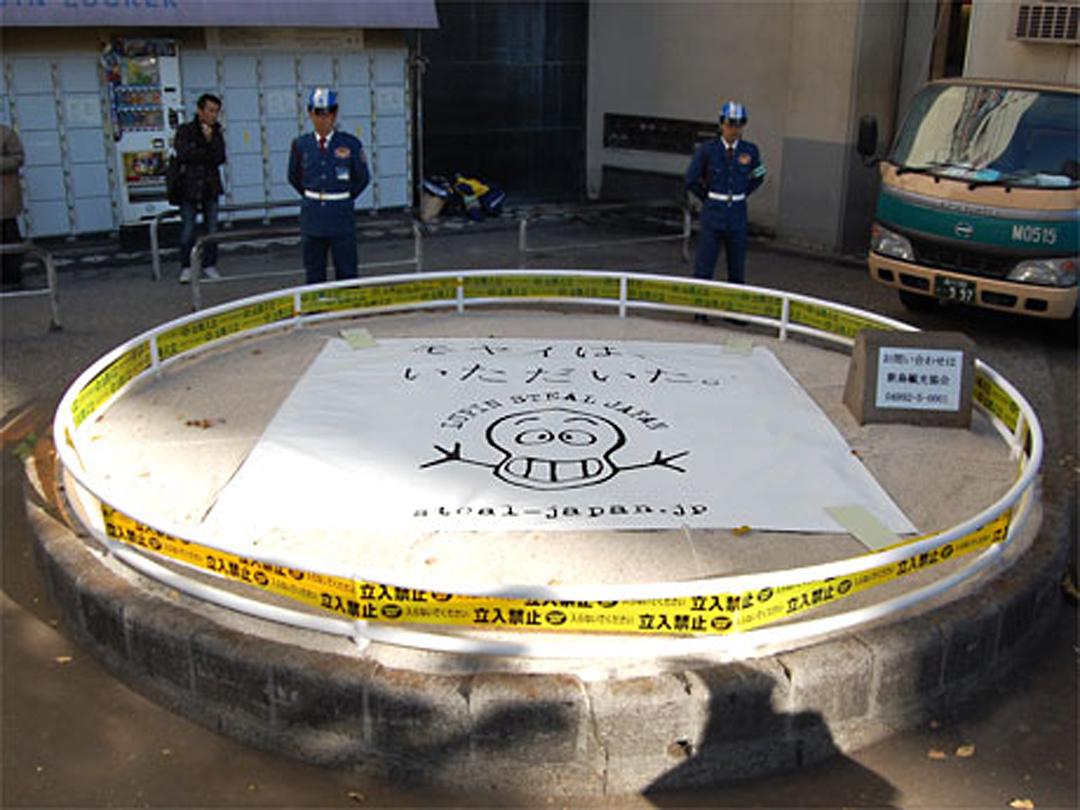
The Moai Statue disappears along with Lupin III's statement of crime (Photo taken on December 7, 2009)
In December 2009, with the cooperation of the Niijima Tourism Association and others, the dirty Moai statue was transported to Niijima and cleaned. Taking advantage of the Moai statue's temporary absence, a PR promotion was developed in which the anime character "Phantom Thief Lupin III" made a statement saying "We took the Moai," and the Moai statue disappeared.
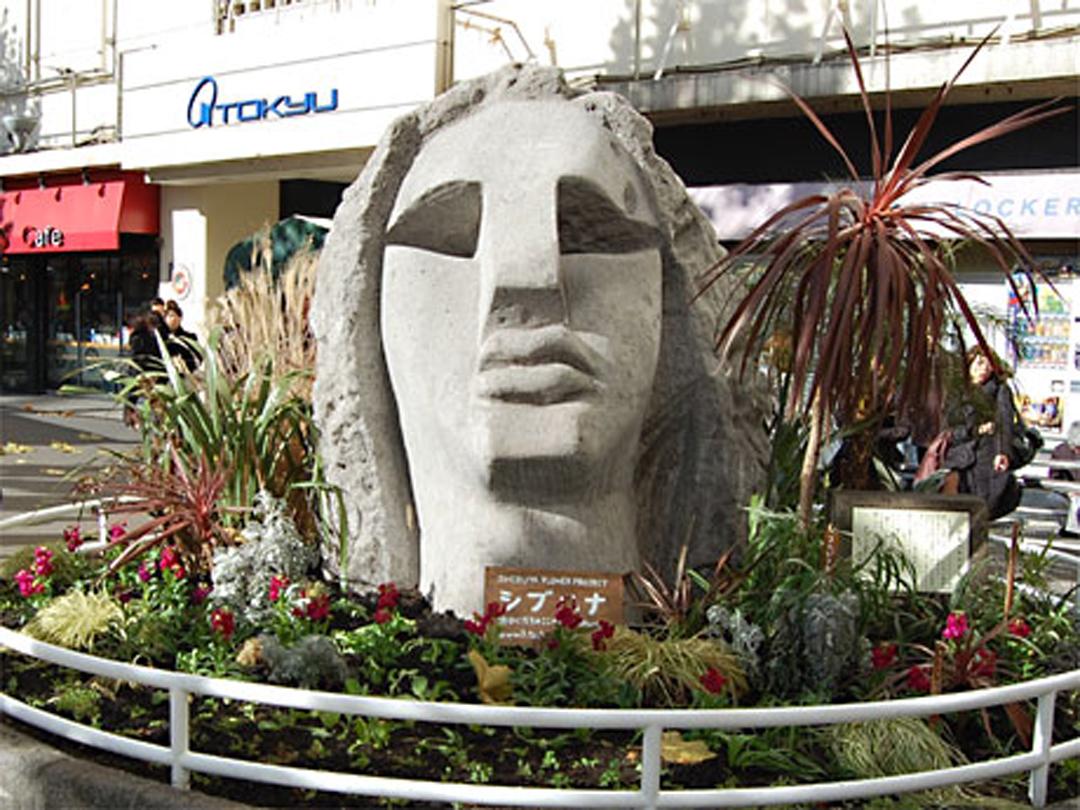
The Moai Statue has returned clean and white (Photo taken on December 21, 2009)
This device caused a big stir, and about two weeks later, just before Christmas, the Moai statue was returned, cleaned and pure white, with a message from Lupin saying, "A wonderful Christmas present," attracting a lot of attention.
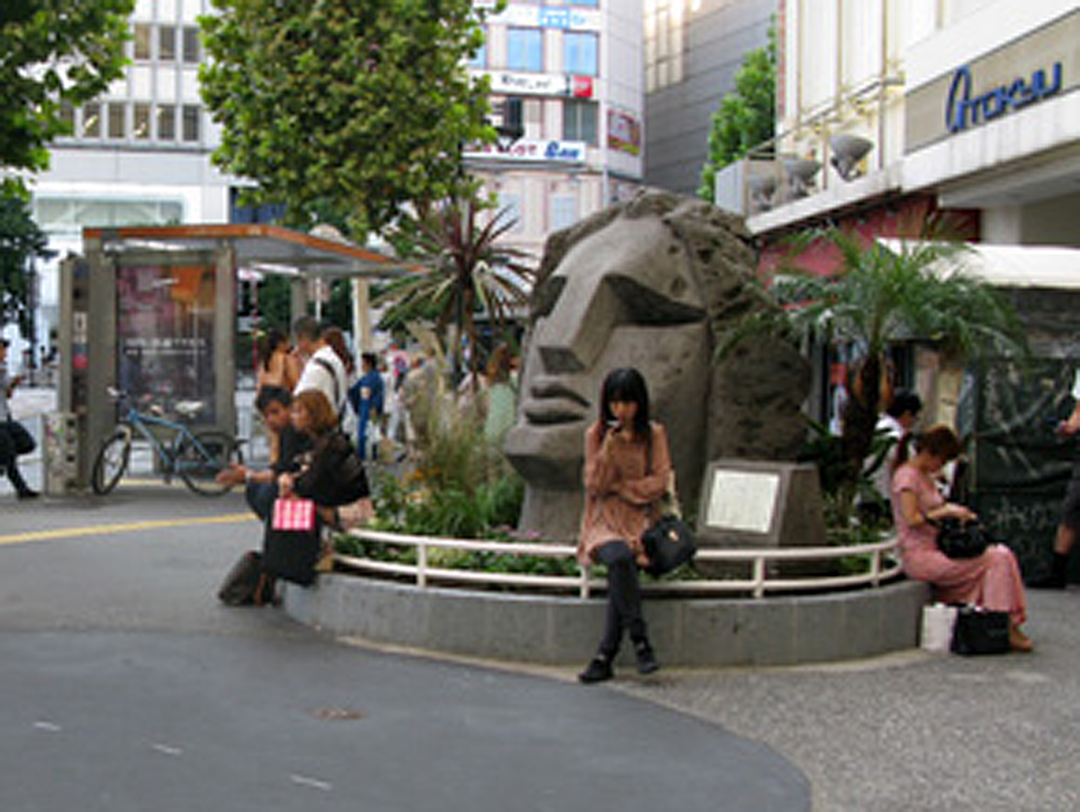
People sit on the fence around the circular flowerbed surrounding the Moai statue to take a rest or meet up with others (Photo taken in 2012)
From the moment it was installed, the Moai Statue, along with the Hachiko Statue, became a popular meeting spot on the west side of the station. At the time, mobile phones and smartphones were not widespread, and even if you decided to meet your friends in front of Hachiko at a certain time, you often couldn't meet them in the crowds. Because of this, the Moai Statue's presence as a "second meeting place" that was relatively less crowded became more prominent, and it gradually became loved by people visiting Shibuya.
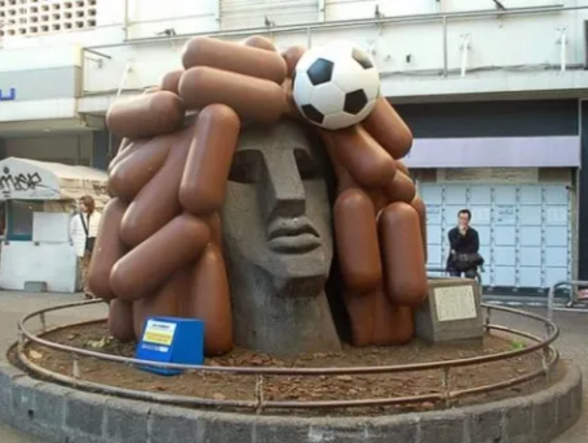
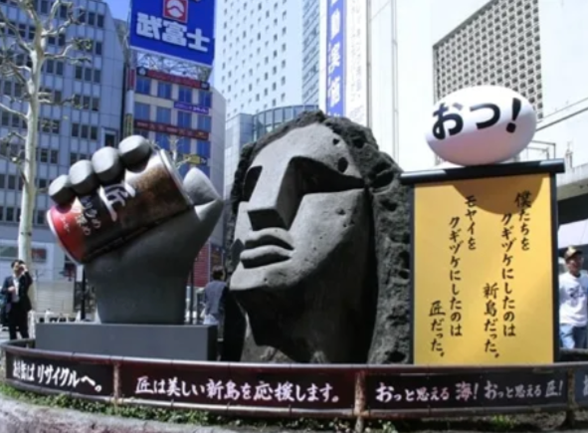
Left: Toyota Cup 2005 PR promotion (December 2005) Right: Nestle Japan canned coffee PR promotion (April 2008) Images provided by Shibuya Keizai Shimbun
In the past, the statue was also frequently used for corporate PR promotions. For example, Nestle Japan had the statue hold a can of coffee, the statue was transformed into a hairstyle with a soccer ball attached to it for the Toyota Cup promotion, and the statue had dreadlocks for the Mod Hair promotion, attracting attention through various costumes. These unique presentations made the statue a popular information hub for Shibuya.
Changes and new developments brought about by Shibuya redevelopment
However, in recent years, the environment surrounding the Moai Statue has been changing. A smoking area was installed next to the Moai Statue, and the passage from Hachiko Square to the West Exit was closed due to the closure of the West and South Buildings of the Tokyu Toyoko Department Store, so the convenience of the statue as a meeting spot has gradually been lost. The Moai Statue itself must have felt uncomfortable.
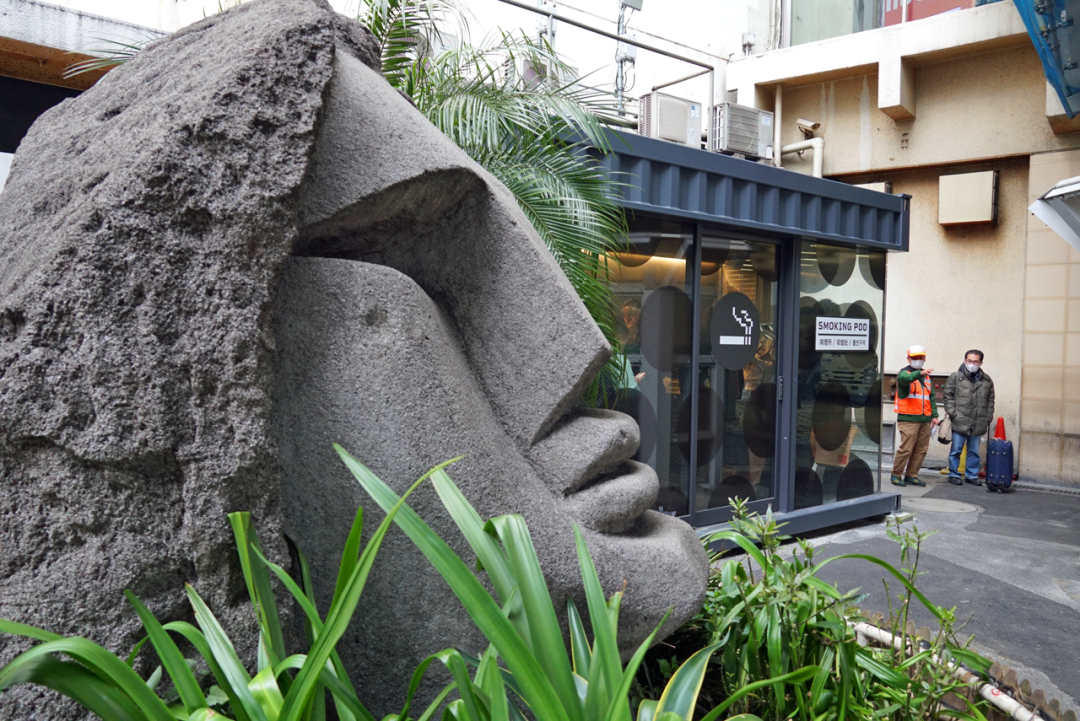
A smoking area has been set up where the outdoor coin lockers used to be (Photo taken in March 2020)
The Moai statue has been loved by the people of Shibuya for 44 years since it was installed, but what is it doing now? Demolition work on the West and South buildings of the Tokyu Toyoko Department Store is progressing, and the area where the Moai statue was located is now included in the temporary fence of the construction area. Even when looking from above the construction site, the Moai statue is nowhere to be seen. Where on earth has it gone?
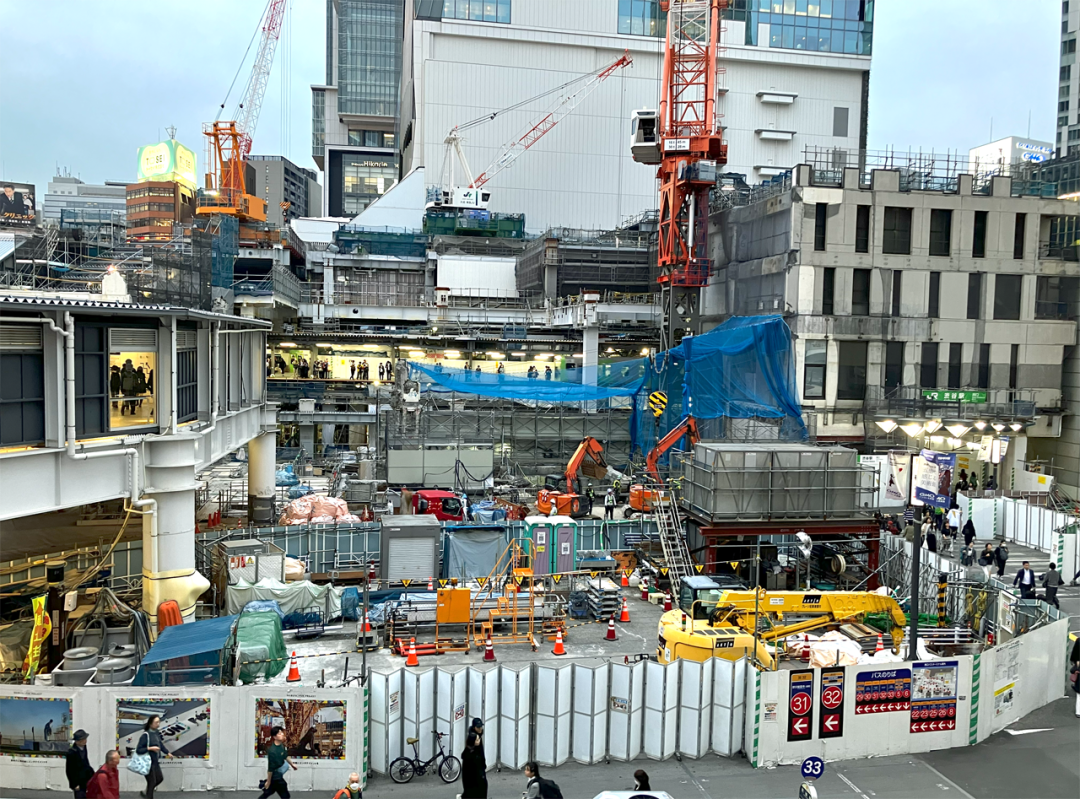
Currently, a large temporary fence has been erected around the west exit of Shibuya Station due to redevelopment work. (Photo taken in November 2024)
In fact, on November 29, 2024, the Moai Statue was moved to a new location. The new location is in the same West Exit area, across the street from Shibuya Fukuras. Considering safety and traffic interference, the relocation work was carried out over two nights on November 28th and 29th. We would like to introduce the details of the work in our "Behind the Scenes of the Moai Statue Relocation" report.
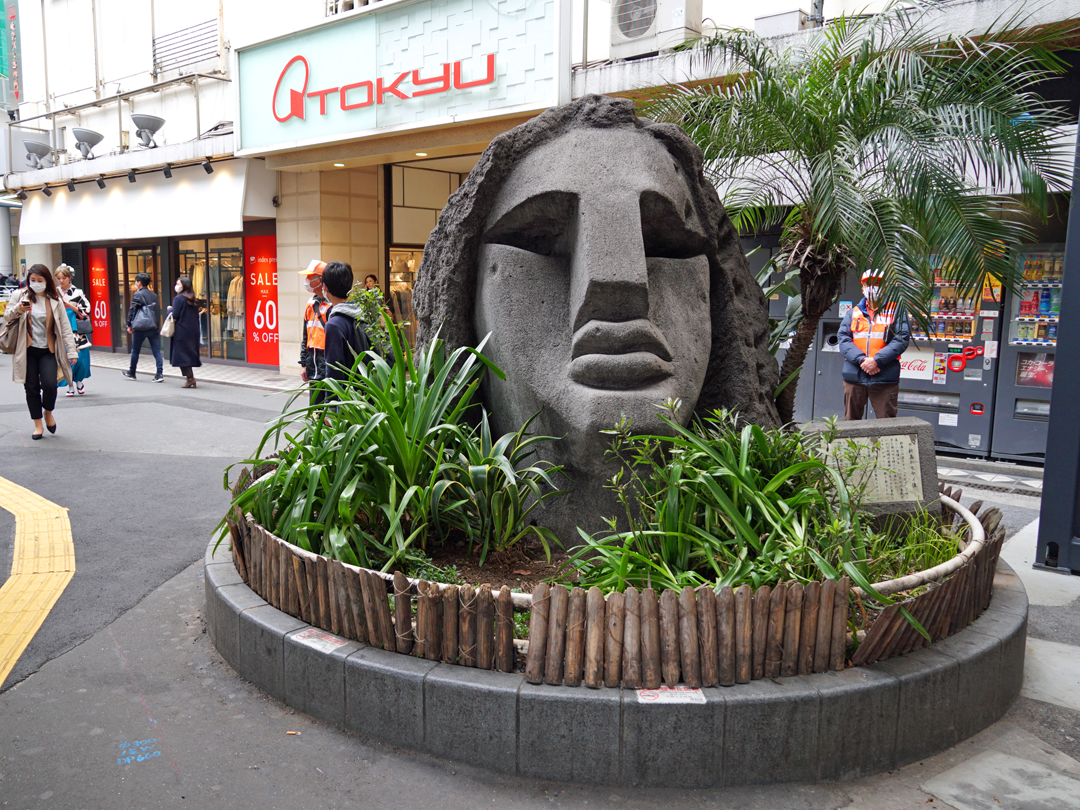
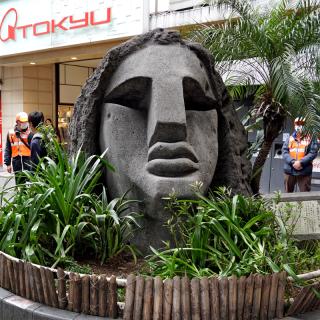
![[Report] Turning Shibuya's icon into a media outlet: "Beautiful Skin PR" starring Shibuya Moai Statue](https://biz.shibuyabunka.com/storage/images/watch//1764640710.jpg)
![[Report] "Shibuya Archive Photo Exhibition 2025" opens, shining a light on Shibuya's streets, including "Koibumi Yokocho" and "Spain Hill"](https://biz.shibuyabunka.com/storage/images/watch//1763622716.jpg)
